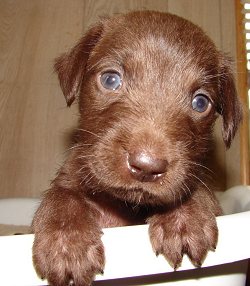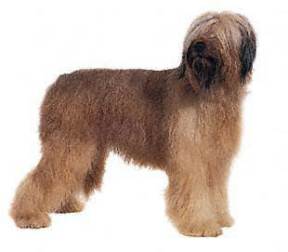Height: 22-27 inches
Weight: 70-90 lbs.
Life Span: 10-12 yrs.
Breed Group: Herding Dogs
Overview
Vigorous, alert, strong, agile, and powerful, the briard has many of the
qualities of a superb herding dog, and is protective of its herd/family
and suspicious of strangers.
It has an independent spirit and needs consistent obedience training from
an early age (it's a slow learner).
The briard is good with children and other animals if raised with them and
well trained. The briard is not a wanderer; this dog prefers to stay home
and guard the "flock."
Appearance
The briard's outercoat is generally six inches or longer and is hard, dry,
and wavy; the undercoat is fine, dense, and tight.
The coat color is fawn, black, gray, or tawny. The tail has a hook or crook
at the end.
Grooming & Exercise Needs
The briard needs to be brushed and combed every other day so its coat won't
become matted.
It has the energy level of a working dog--long walks or runs will thwart
destructive behavior.
Origins
Probably named for the French province of Brie, the briard is the most popular
sheepdog in France and has been used there as a livestock guardian and sheepherder
since the Middle Ages.
Special Alerts
The briard is not recommended for inexperienced dog owners.
Breed-related health concerns: hip dysplasia, bloat, hypothyroidism.
Reference: AKC - American Kennel Club |

